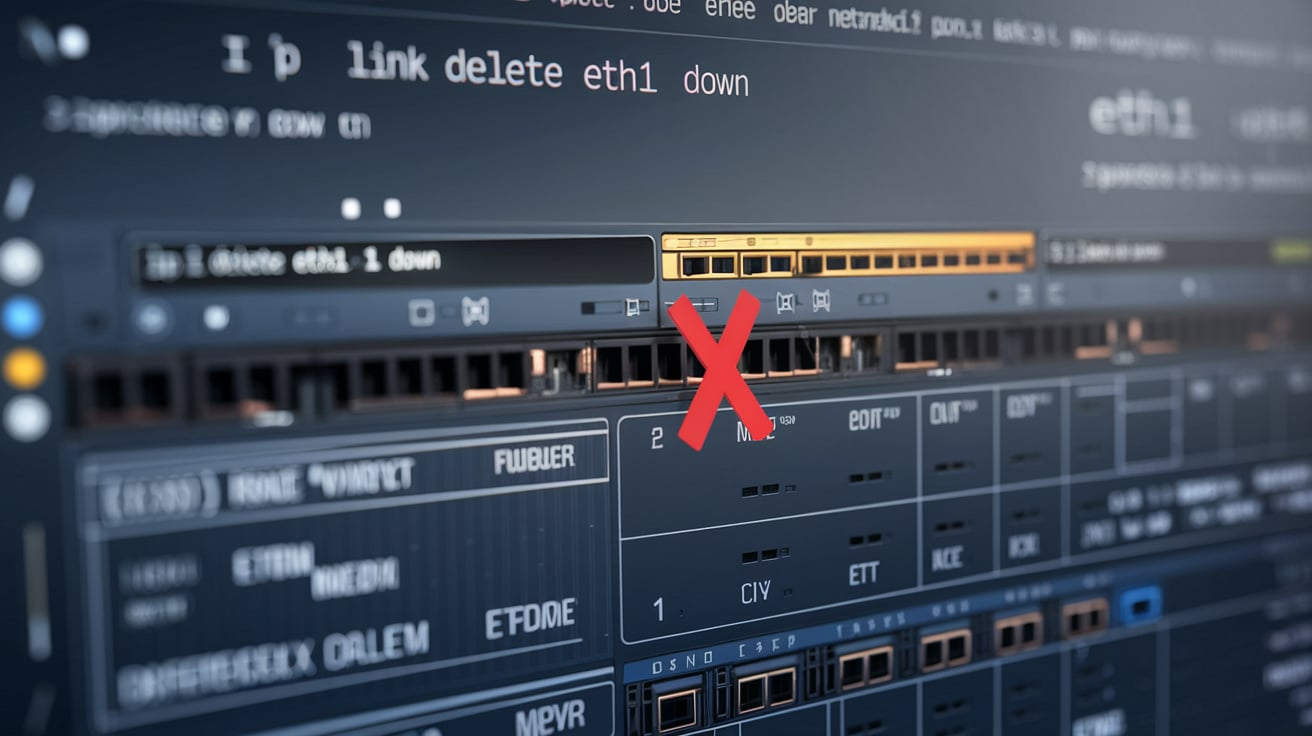
Introduction
In CentOS 7, network interfaces are essential for establishing connectivity between your system and various networks. Managing these interfaces efficiently is crucial, especially when you delete an interface like eth1. Understanding how to approach “CentOS 7 delete eth1” ensures you manage network resources effectively while maintaining system stability and connectivity.
Reasons to Delete eth1
There are numerous scenarios where deleting the eth1 interface becomes necessary in CentOS 7. These include:
- Hardware Changes: Replacing or upgrading network hardware can necessitate removing obsolete interfaces.
- Network Reconfigurations: Streamlining network setups or addressing IP conflicts might require executing “CentOS 7 delete eth1.”
- System Cleanup: Tidying unused or redundant interfaces helps maintain a streamlined network configuration.
Considering these reasons ensures that implementing “CentOS 7 delete eth1” aligns with your broader network management strategy.
Prerequisites for Deleting eth1
Before embarking on “Cent OS 7 delete eth1,” ensure you meet these prerequisites:
- Administrative Privileges: Only users with root access can modify network configurations.
- Backup Network Settings: Safeguard against potential mishaps by saving current network configurations.
- Familiarity with Network Setup: A clear understanding of existing network architecture aids in seamless execution.
These elements prepare you for a smooth transition as you proceed with “CentOS 7 delete eth1.”
Checking Existing Network Interfaces
To initiate “CentOS 7 delete eth1,” verifying current network interfaces is vital. Execute the command:
Ip address show
This command provides a comprehensive list of all active interfaces, allowing you to confirm the presence and status of eth1. Understanding the output facilitates informed decision-making during “CentOS 7 delete eth1.”
Bringing Down the eth1 Interface
Before you delete eth1, deactivating the interface is crucial to prevent disruptions. Use:
sudo ifdown eth1
This command ensures that “CentOS 7 delete eth1” proceeds without compromising ongoing network operations. This step is pivotal in maintaining network integrity during modifications.
Deleting eth1 Configuration Files
Network interfaces in CentOS 7 rely on configuration files located in /etc/sysconfig/network-scripts/. To remove eth1, locate and delete the corresponding ifcfg-eth1 file using:
sudo rm /etc/sysconfig/network-scripts/ifcfg-eth1
This command is central to “CentOS 7 delete eth1,” as it permanently removes the configuration, effectively deleting the interface from the system.
Verifying Changes
Post-deletion, verifying the implementation of changes is essential. Restart the network service by:
Sudo systemctl restart network
Restarting the service applies the configuration changes, confirming the successful execution of “CentOS 7 delete eth1.” This step ensures the network operates with the updated settings.
Troubleshooting Common Issues
Should issues arise during “CentOS 7 delete eth1,” consider the following troubleshooting steps:
- Active Interface Check: Ensure eth1 is inactive before deletion.
- File Permissions: Verify file permissions to ensure successful deletion.
- System Reboot: A reboot might be necessary if network changes are not reflected immediately.
Proactively addressing these potential issues ensures the smooth execution of “CentOS 7 delete eth1.”
Understanding Network Repercussions
Deleting network interfaces can have significant repercussions. During “CentOS 7 delete eth1,” ensure that no critical services are dependent on this interface. Overlooking dependencies might lead to network downtimes and service disruptions.
Alternatives to Deleting eth1
If you’re uncertain about proceeding with “CentOS 7 delete eth1,” consider these alternatives:
- Disabling Temporarily: This approach allows for potential reactivation if needed.
- Reconfiguring for Other Purposes: Modify settings to repurpose eth1 instead of deleting.
- Renaming Interfaces: Address conflicts by renaming interfaces rather than deletion.
Exploring these alternatives provides flexible options for network management without immediate deletion.
Post-Deletion Network Testing
After “CentOS 7 delete eth1,” conduct thorough network testing to ensure the remaining interfaces function correctly. Utilize tools such as ping and traceroute to verify connectivity, ensuring no unintended disruptions occur due to the deletion.
Reconfiguring Network Interfaces
If new requirements arise after “CentOS 7 delete eth1,” reconfiguring network interfaces is straightforward. Create new configuration files as needed, assigning appropriate settings to meet evolving network demands.
Benefits of Deleting Unused Interfaces
Carrying out “CentOS 7 delete eth1” can streamline your network setup, reducing complexity and potentially enhancing security by minimizing attack surfaces. Aligning network configurations with actual requirements optimizes both performance and security.
Documentation and Compliance
Documenting the “CentOS 7 delete eth1” process is critical for maintaining compliance and future reference. Keeping detailed logs of network changes aids in audits and system management, providing a record of decisions and actions.
Security Implications
Consider the security implications when executing “CentOS 7 delete eth1.” Removing unnecessary interfaces enhances your system’s security posture by reducing potential entry points for malicious activities.
Conclusion
The “CentOS 7 delete eth1” process requires meticulous planning and execution. By adhering to outlined procedures and considering network dependencies, you can effectively manage network interfaces in CentOS 7, ensuring optimal system performance and security.


